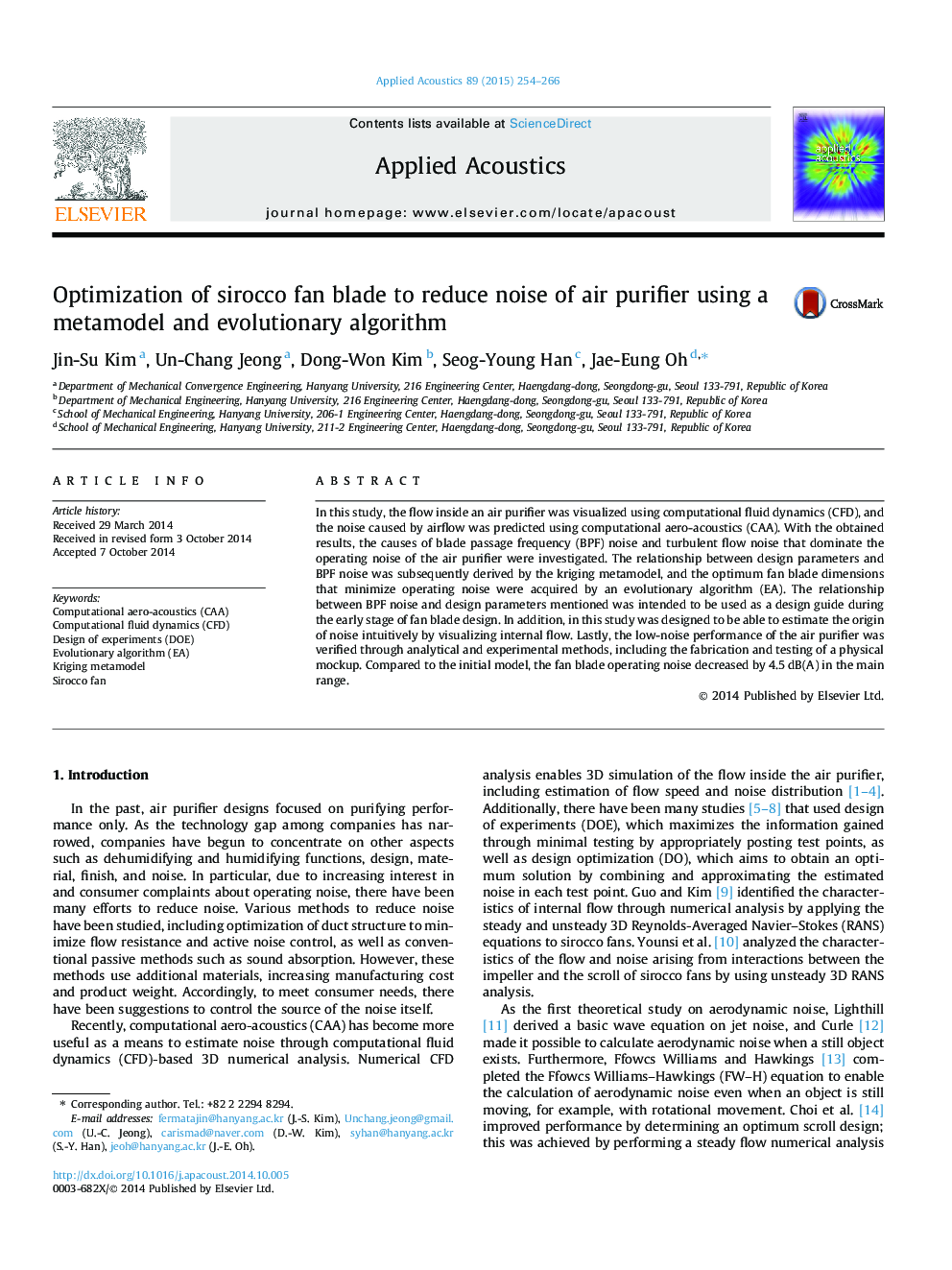| Article ID | Journal | Published Year | Pages | File Type |
|---|---|---|---|---|
| 7152718 | Applied Acoustics | 2015 | 13 Pages |
Abstract
In this study, the flow inside an air purifier was visualized using computational fluid dynamics (CFD), and the noise caused by airflow was predicted using computational aero-acoustics (CAA). With the obtained results, the causes of blade passage frequency (BPF) noise and turbulent flow noise that dominate the operating noise of the air purifier were investigated. The relationship between design parameters and BPF noise was subsequently derived by the kriging metamodel, and the optimum fan blade dimensions that minimize operating noise were acquired by an evolutionary algorithm (EA). The relationship between BPF noise and design parameters mentioned was intended to be used as a design guide during the early stage of fan blade design. In addition, in this study was designed to be able to estimate the origin of noise intuitively by visualizing internal flow. Lastly, the low-noise performance of the air purifier was verified through analytical and experimental methods, including the fabrication and testing of a physical mockup. Compared to the initial model, the fan blade operating noise decreased by 4.5Â dB(A) in the main range.
Keywords
Related Topics
Physical Sciences and Engineering
Engineering
Mechanical Engineering
Authors
Jin-Su Kim, Un-Chang Jeong, Dong-Won Kim, Seog-Young Han, Jae-Eung Oh,
